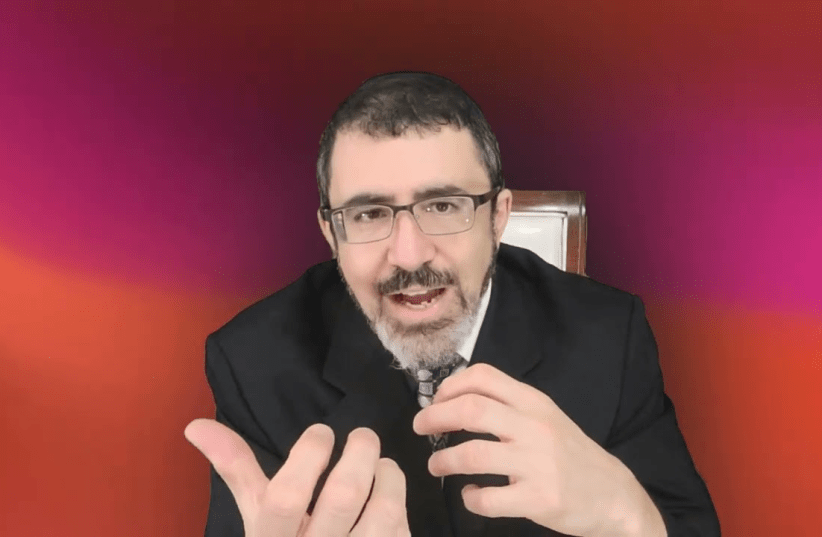The Torah passages are full of important messages which are relevant to, and enhance our daily lives. Rabbi Shay Tahan, Rosh Kollel Sha'are Ezra and head of Bet Horaah Arzei HaLebanon, opens the gates for us to understand those messages, from their source, in a clear manner. This week: Parshat Zachor.
Stomping of the feet when hearing Amalek.
Immediately upon their exit from Mitzrayim, the Nation of Israel was attacked and harassed by the people of Amalek. This act was so evil, that the Torah commands us duly to always remember it, and never forget. Therefore, before Purim we read the Parasha of ‘Zachor’ which speaks of that brutal attack of Amalek while we were in that state of weakness.
While we are all familiar with the tradition of stomping our feet and making noise upon hearing Haman’s name by the recital of the Megilat Ester, many of us are not so familiar with doing the same while hearing the name of Amalek at the reading of Parashat Zachor.
In many Sefaradi shuls, the congregants indeed stamp their feet, albeit quietly to make sure the noise of the stamping isn’t heard. The history of how this custom had formed and why the stamping is purposely done quietly is very interesting.
In order to correctly understand this, we need to travel back in time to a city near Thessaloniki, Greece which had a prominent Sefaradi congregation. That city is called Rhodes, which was led by Harav Rachamim Chaim Yehudah Israel, a scholar of the highest caliber, held in very great esteem. At the time of reading the Parasha of Zachor, the entire congregation, young and old, would make a big commotion–the adults would clap their hands and stomp their feet, while the children would bang loudly with their toy hammers. The noise sounded so loud that it was heard from afar and it would even scare the people walking outside the synagogue.
This practice continued for years until Rabbi Israel decided to limit the noise because of a story that happened at the time. Some of the neighbors in that town used to make a doll with the image of a Jew and beat it on a certain day of every year. On the same day, angry mobs would come out looking for Jewish people to beat. No need to explain the fear and sorrow that was felt at the time. Unfortunately, this continued until the rabbis of the town got together and pleaded with the judge of the Supreme Court to put a stop to it, and with the help of HaShem, so he did. But when he heard about the custom to kick and bang upon hearing the name of Haman and Amalek, he got angry, feeling this was the precise act that he just ordered halted the other way. When it came to the attention of Rabbi Israel, he immediately decided to end this custom in hopes that this judge wouldn’t reverse his previous decision.
The Rabbi had another issue with the stamping, a halachic concern. Fearing it may interfere with the actual hearing of the Zachor reading, thus wanting to abolish it to ensure that not a single word of the Parasha is missed. Upon inquiring from his colleagues in other towns, he found that in Izmir, Turkey they had the same custom, which the city’s rabbi, Harav Avraham Palacci wasn’t pleased with as well.
When he was ready to annul this custom, he was challenged with a clear ruling of the Bet Yosef, Rabbi Yosef Karo (author of the Shulchan Aruch), in which he discussed (O.H 690) a custom where the children would take wooden boards and write Haman’s name on them, followed by which they would knock stones against them until Haman’s name would get erased. He writes that such customs have authentic sources and therefore one shouldn’t attempt to ridicule them in any way. Rabbi Israel deduced from the above that the custom was just as described, but with the intention being the only difference; in an attempt to erase Haman’s name, but not in order to create noise and commotion. Therefore, felt Rav Israel, he had adequate grounds to halt the custom immediately.
Rav Israel gathered a group of eight of the greatest Sefaradi Rabbis of the time, all signing a letter stating that no noise of any sort be made at the time of the reading or after. Another letter was subsequently written by two other Torah giants, as described at length in the Responsa Ben Yamin.
Since then, the loud clapping and stomping had completely stopped; this custom was all but forgotten, save for the few communities who still keep doing so, albeit very quietly, so as to commemorate the old tradition.
This article was written in cooperation with Shuva Israel
